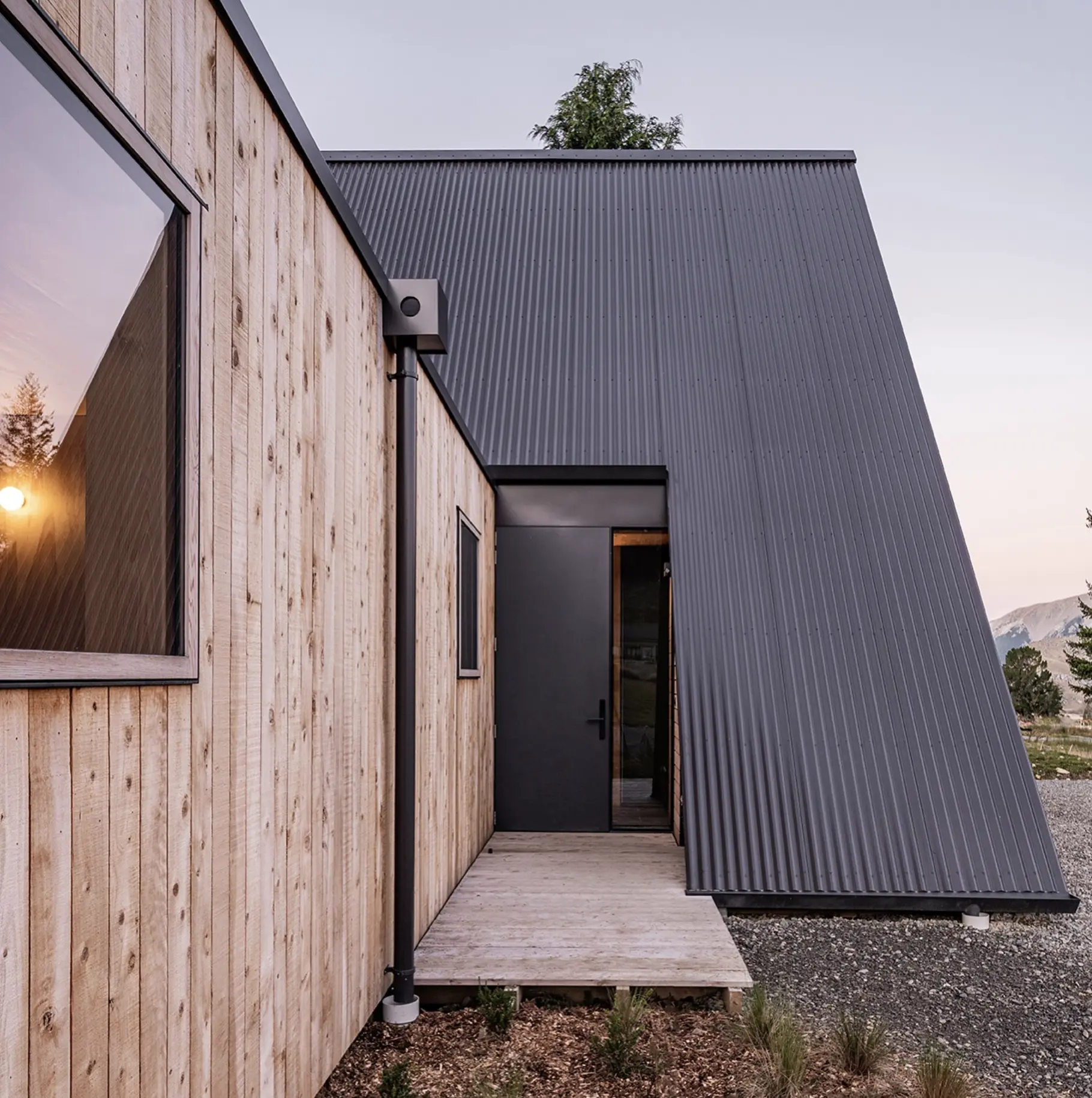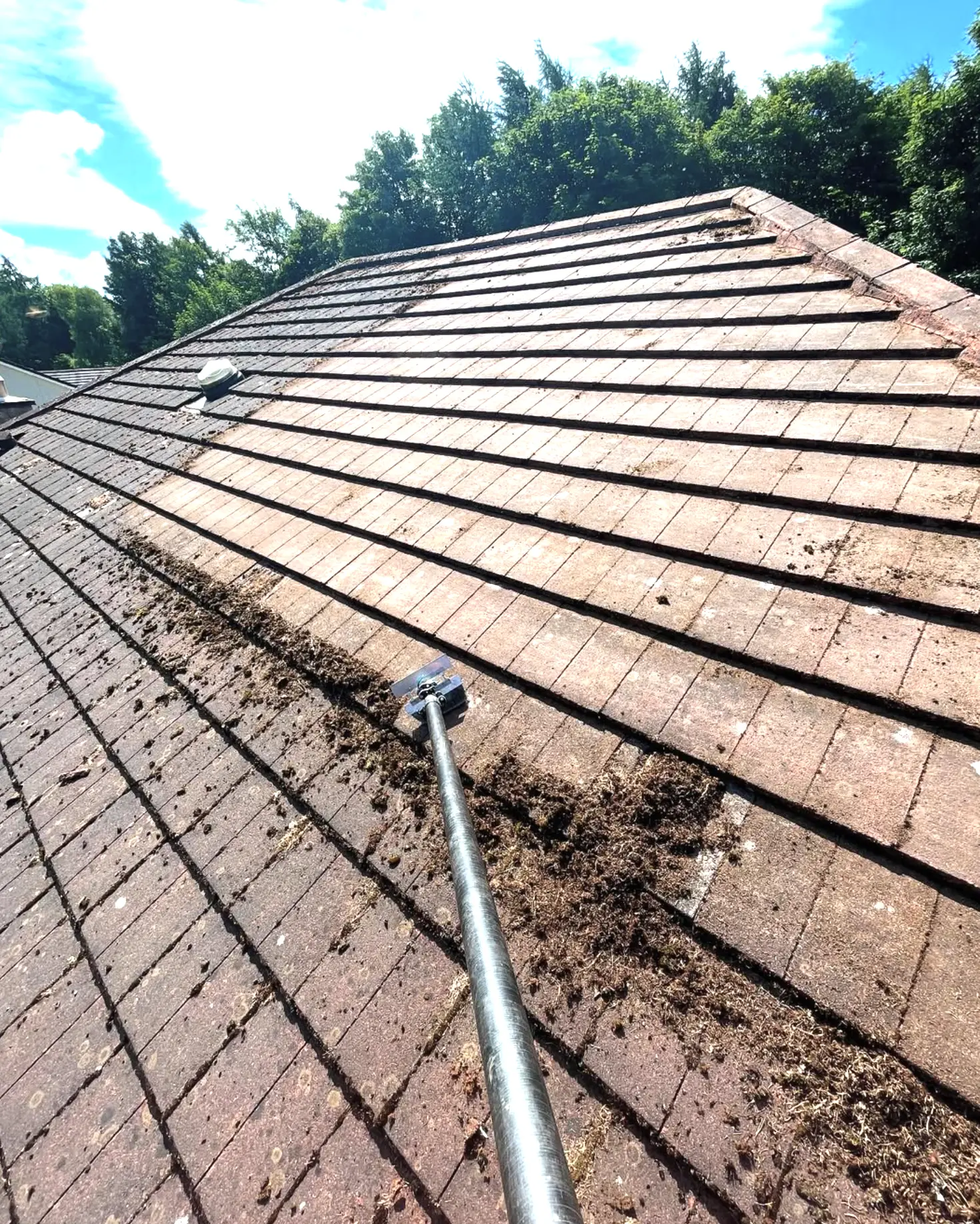In this guide, we’ll show you how to clean a corrugated roof properly — without damaging the surface, voiding warranties, or blasting paint off with a pressure washer set to “overkill.” Whether you’ve got corrugated steel, fibreglass, or polycarbonate, we’ll walk you through the safest techniques, gear to use, cleaning solutions that actually work, and real-world tips from roofs we’ve scrubbed across the country.
If your corrugated roof’s gone from proud protector to patchy, lichen-ridden eyesore, don’t stress — we’ve seen worse. Algae, moss, and grime don’t just ruin the look — they trap moisture, wear away coatings, and lead to leaks, rust, and premature roof failure if you ignore them for too long.

Tough, Noisy, and Built to Last
Corrugated roofing is made from metal sheets (like steel or galvanised zinc), fibreglass or polycarbonate that’s shaped into that classic wavy form. It’s a go-to in Aussie roofing materials — lightweight, durable and made to take on a barrage of elements.
You’ll find:
- Galvanised zinc roof (older homes, rural sheds)
- Modern homes and commercial roofing systems
- Corrugated fibreglass roof and polycarbonate roofing (patios, garages and carports)
Each one has its own quirks so understanding what type of roof material you have will guide the cleaning product labels, roof cleaning schedule and methods you should use.
Why Clean Your Corrugated Roof?
A bit of regular cleaning can prevent more than just ugly lichen stains or moss spores. Here’s what maintenance really protects you from:
- Lichen, algae and moss growth, especially in humid climates
- Rust stains and spore deposits are damaging your coatings
- Clogged gutters, especially if the gutters aren’t cleaned regularly
- Breakdown of roofing paint systems, affecting metal roofing paint warranties
- Airborne dirt, pollution particles and grease oil
Neglect can lead to roof damage, structural roof repairs and in worst-case scenarios, full roof replacement. We’ve seen it all — from uncoated steel pieces to entire roofs crumbling under years of lichen and acid rain stains.


What Makes Lichen and Gunk Grow on Corrugated Roofs?
Lichen, moss and other non-water elements cling to corrugated roof surfaces like a mozzie to bare legs. They thrive on:
- Bad weather and a humid climate, perfect for moss spores
- Dust, natural debris and pollution particles settling on roof panels
- Low spots where water pools (especially on an old roof)
- Colour coating wearing thin, exposing the steel roof or fibreglass below
If left unchecked, these tougher non-water elements can eat into your coating and that’s when you get rust pieces, corrosion and roof cladding deterioration.
How to Get Rid of Lichen
Sweep off debris
- Use a soft brush or gentle cleaning pad to remove debris.
- Avoid steel wool or wire brushes unless treating rust spots directly.
Wet down with plain water
- Hose with clean water (not too hot, not freezing — warm water or cold water works).
- No need for pressure washing unless you’ve got control and training.
Apply a Moss Roof Treatment or mild detergent
- Avoid harsh commercial detergents or abrasive detergents.
- Use washing soap, dish soap or laundry detergent diluted in soapy water.
- Apply with a pressure sprayer or garden sprayer.

Let it soak
- Let the cleaning solution sit for a few days — it’ll break down the moss spores and lichen stain.
Rinse and scrub gently
- Use a nylon brush or soft brush with mild dish soap and warm water.
- Don’t go in with a high-power cleaning agent unless it’s roof-safe.
*Avoid muriatic acid, sodium solutions or scouring powders — they’ll kill the coating or leave a brown colour from corrosion.
Should I Get a Pro In?
If your corrugated steel roof is steep, high or dirty, a professional roof cleaning service is the way to go. Here’s why:
- They use professional spray equipment for metal roofing
- They know the types of roofing material and the correct cleaning process
- They follow safety procedures, wearing protective clothing and harnesses
The Window Cleaning Melbourne Crew reminds clients that a clean roof works hand in hand with clean windows for full property appeal.
Need help with it all? Our team is always here to help with corrugated roof maintenance or methods for moss removal that actually work. Don’t let acid rain or moss spores win — stay ahead with smart cleaning and smarter tools.


How to Look After Your Roof
Maintenance means fewer repairs and longer protection. Follow these pro tips:
- Clean every 6–12 months
- Rinse off after 36ml of rain if you live near industry (hello, black rust and pollution particles)
- Keep gutters and garage doors clean
- Touch up with paint removers and re-coat if the paint starts to flake
- Store your gear in an equipment shed so it’s ready each season
Even a basic roof needs love — and a bit of elbow grease goes a long way.
FAQ
How often should I clean my corrugated roof?
We recommend maintenance every 6–12 months if you live in a humid climate or near trees.
Can I use a pressure washer on a steel roof?
Yes, but only medium pressure — and never on colour coating without testing. The lowest pressure is safest.
What’s the best cleaning solution for metal roofs?
Mild detergent or dish soap with warm water is ideal. Avoid harsh or abrasive cleaners.
Are commercial detergents safe for roof surfaces?
Only if approved for roofing. Always check the product data sheet or call the company for help.
What do I do about rust or acid rain stains?
Use rust neutralising agents of acid rain specific cleaners. Avoid muriatic acid and test in a corner first.
